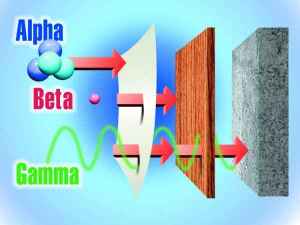While most people today are aware of the inherent
dangers of radiation, radiation is nevertheless the byproduct of many
technologies that depend upon today, particularly in the medical field.
We are able to utilize these radiation producing technologies however
due to the benefits of radiation shielding.
Radiation shielding works by reducing the power and effects of ionizing
radiation and helps add protection to users of these technologies which
require radiation to function. For example,radiation shielding is  used
by radiologists to ensure that they are not affected by the radiation
that they encounter on a normal basis with their jobs.
used
by radiologists to ensure that they are not affected by the radiation
that they encounter on a normal basis with their jobs.
 used
by radiologists to ensure that they are not affected by the radiation
that they encounter on a normal basis with their jobs.
used
by radiologists to ensure that they are not affected by the radiation
that they encounter on a normal basis with their jobs.
There
are a few notable characteristics which make a material a good
radiation shielding material. In general, the most important
characteristics are density and thickness. In both cases, the denser or
thicker a material is, the better it is for radiation shielding.
Radiation shielding materials
must have the ability to reduce the intensity of radiation and to
increase the protection of individuals using the machines or
technologies which produce radiation. Among the materials that are well
known to prevent the effects of radiation from being heavily felt are:
lead, steel, concrete, water, wood or lumber as well as packed soil.
X-ray shielding
Density
of the material is a huge determinant as to whether the material can
prevent radiation and its negative effects. As a matter of fact, all
materials can act as shields, however, their efficacy varies from one
material to another.Lead and tungsten are the most suitable materials for x-ray shielding due to their high densities relative to their cost. They work by absorbing the rays and preventing them from going to unwanted places. C omposite
materials, which are materials that are produced from a combination of
two or more separate materials,are also used for radiation shielding
applications, for example tungsten filled polymers. Such products can
provide the shielding benefits of tungsten along with the production
advantages of plastics.
omposite
materials, which are materials that are produced from a combination of
two or more separate materials,are also used for radiation shielding
applications, for example tungsten filled polymers. Such products can
provide the shielding benefits of tungsten along with the production
advantages of plastics.
 omposite
materials, which are materials that are produced from a combination of
two or more separate materials,are also used for radiation shielding
applications, for example tungsten filled polymers. Such products can
provide the shielding benefits of tungsten along with the production
advantages of plastics.
omposite
materials, which are materials that are produced from a combination of
two or more separate materials,are also used for radiation shielding
applications, for example tungsten filled polymers. Such products can
provide the shielding benefits of tungsten along with the production
advantages of plastics.
Radiology rooms in
hospitals for X-Ray are made in a way to ensure that they are not able
to disperse these radioactive particles to the unwanted areas of the
hospital and are contained. Radiation-shielding materials are used to
ensure that radiation is confined only to these rooms and none of the
dangerous rays escape the room. The machine used to carry out the x-ray
procedure should also have internal shields in place to ensure the
particles are focused on one point and not all over which could be
hazardous.
What are the consequences of improper radiation shielding?
Without
proper radiation shielding measures in place, these radiation producing
technologies can lead to severe health risks and effects. Radiation
exposure can lead to numerous health problems such as hair loss, organ
failure and more.After excessive exposures the victims can experience
change of DNA, cancer and mutation. These are considered the long term
effects. Some of the short term effects include radiation poisoning,
burns, and radiation sickness.






0 comments:
Post a Comment